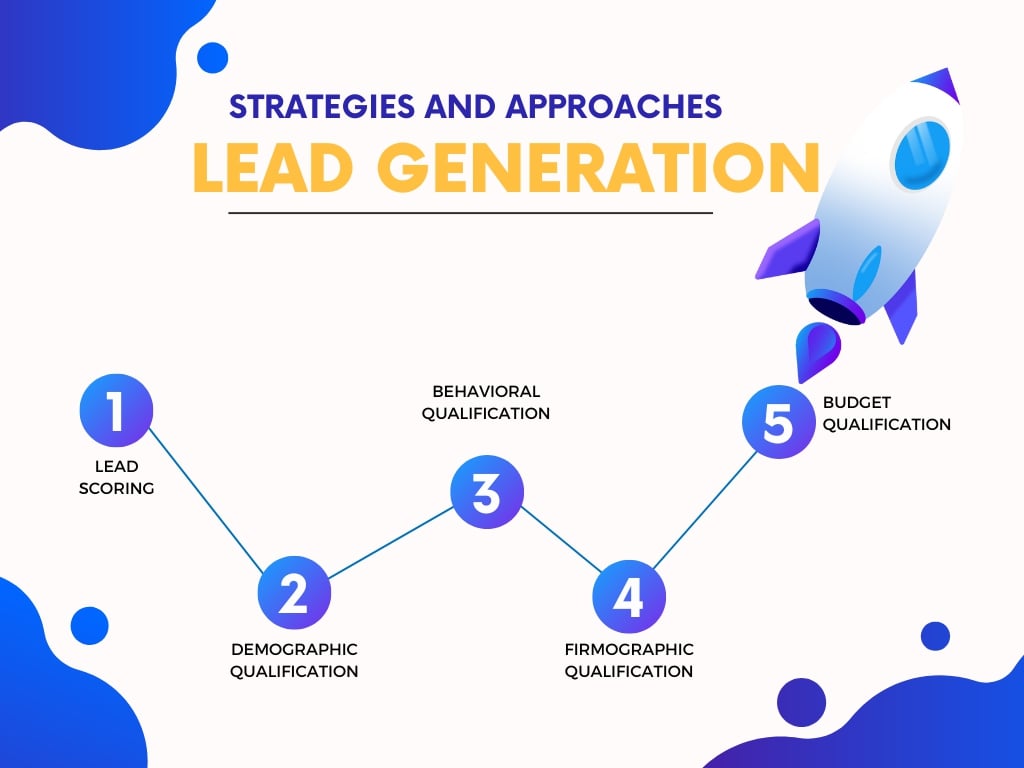Being seen as an authority and an influencer in a certain sector or field is referred to as thought leadership. It entails the development and distribution of original, perceptive theories, notions, and methods that go against conventional wisdom and offer fresh viewpoints on contemporary problems and trends.
Thought leaders are people or organizations that have developed a reputation for knowledge, influence, and creativity in a particular field. They are frequently sought out for their perceptions, counsel, and direction.
The practice of creating and disseminating quality material, including blog posts, whitepapers, films, and podcasts, in order to establish oneself as an authority in their industry is known as thought leadership.
The capacity to anticipate and evaluate trends, have a thorough understanding of the industry and have the ability to express and communicate complicated ideas in a compelling way are all necessary for effective thought leadership.
A key tactic for boosting brand recognition, establishing authority, and spurring company expansion is thought leadership. Individuals and companies can set themselves apart from rivals, draw in fresh clients and consumers, and broaden their network of business associates by establishing themselves as thought leaders in their respective fields.
The best example of thought leadership in business is the successful business owners in history, those who have started new ventures, and startups, and finally delivered value to the users and contribute to the body of knowledge.
Quick Links
Definition of Thought Leadership
The technique of positioning oneself or a business as an expert and reliable source in a specific topic or sector is known as thought leadership.
It entails developing and disseminating insightful concepts, viewpoints, and ideas that refute preconceived notions and initiate fresh discussions.
Industry thought leadership is crucial because it can serve to position a business or individual as a subject-matter authority, which can boost exposure and credibility. Additionally, it can promote innovation and creativity within a business as well as increase customer and client trust and influence.
Thought leaders can influence the course of their sector and advance new ways of thinking by exchanging their original insights and ideas. This may result in the creation of brand-new goods and services as well as the detection of new trends and business prospects.
In the end, thought leadership is a potent instrument for developing thought leadership, growing a firm, and increasing brand awareness. Thought leaders may position themselves as respected authorities in their industry and set themselves up for long-term success by offering insightful and unique ideas.
The Characteristics of Thought Leaders
In order to position themselves as authority and innovators in their respective sectors, successful people across a variety of areas have certain features and abilities that make them thought leaders.
Expertise in their profession, creative thinking, a willingness to share knowledge, a continuous output of material, and a strong personal brand are a few examples of these qualities.
Thought leaders can establish a solid reputation, win over their audience’s trust, and have an impact on the direction of their sector by exhibiting these qualities.
Strong Personal Branding
Thought leaders are able to build a personal brand that is distinct from others and that represents their values, knowledge, and viewpoint. Their audience can become more credible and trusting thanks to this branding.
Expertise leaders have in-depth knowledge of their subject, frequently as a result of substantial education, training or experience. They have access to insightful information that challenges the current quo and stimulates innovation.
Expertise in their Field
Expertise leaders have in-depth knowledge of their subject, frequently as a result of substantial education, training or experience. They have access to insightful information that challenges the current quo and stimulates innovation.
Innovative Thinking
Thought leaders have the capacity to think creatively and unconventionally, developing fresh and original concepts that can help mould the future of their sector.
Desire to Share Knowledge
Thought leaders are dedicated to imparting their knowledge and skills to others, whether through teaching, mentoring, or other forms of public speaking. They are giving with their time and money, and they always look for ways to support others in their endeavours.
Concept of Content Marketing
Thought leaders routinely produce and distribute high-quality information that showcases their knowledge and distinctive viewpoint, such as blog posts, videos, podcasts, and social media updates.
They are dedicated to delivering value to their audience and possess the ability to clearly and compellingly express complicated ideas.
Creating Quality Content
It takes commitment, knowledge, and a readiness to impart your knowledge to others to become a thought leader. Developing high-quality content is crucial to this approach. Here are some actions you may do to develop into a thought leader by producing excellent content:
Identifying Your Target Audience
You must have a thorough awareness of your sector and the subjects you cover in order to produce high-quality content. By reading books, going to conferences, and following leaders in your business, you can keep up with the most recent news, trends, and insights. You are supposed to identify your target audience.
Conducting Research and Staying Up-to-Date
You must have a thorough awareness of your sector and the subjects you cover in order to produce high-quality content. By reading books, going to conferences, and following leaders in your business, you can keep up with the most recent news, trends, and insights.
Develop a Content Strategy
Producing high-quality content involves structure and strategy. Identify your objectives, the subjects you want to cover, and the forms you want to employ. To make sure you produce content consistently, set a publishing schedule.
Choosing the Right Medium for Your Content
Content can be shared through a variety of platforms, including blog articles, videos, podcasts, infographics, and social media updates. Choose a media based on your target audience and the kind of material you plan to produce.
Tips for Writing Quality Content
Following are some pointers to bear in mind when producing content:
- Make it Informative: Your material should benefit your readers and solve their problems.
- Be unique: Avoid replicating other people’s content and offer a fresh viewpoint on the subject.
- Humans have limited attention spans, so make your writing succinct and to the point.
- Make use of visuals: You may increase the interest in your content by including photos, infographics, and videos.
- Before posting, make sure your content is well-structured and error-free by editing and proofreading it.
Thought leadership takes time and work to develop, producing high-quality material is a crucial first step. You may position yourself as a respected authority in your field by adhering to these guidelines and continually enhancing your material.
Marketing Your Content
As a thought leader, once you have produced high-caliber material, you must sell it to a larger audience. These are some actions you may take to successfully advertise your content:
Identify the Right Channels
Your website, social networking, email marketing, and guest blogging are just a few of the channels you can use to promote your content. Choose the channels that are most appropriate for your audience and the kind of material you are producing.
Understanding Your Audience's Behavior
To effectively promote your material, you must understand how your audience interacts with the web. Make sure your material reaches them at the times when they are most likely to engage with it by learning the platforms they use and when they are most active.
Using Social Media
Social media is a great way to spread the word about your content and develop connections with your audience. Share your material on social media, interact with your fans, and join discussions about it.
Building Relationships with Your Audience
One of the most important aspects of becoming a thought leader is developing relationships with your audience. Build a devoted following by interacting with your followers, answering their questions and comments, and requesting their input.
Utilizing SEO Strategies
Using SEO strategies can help your content rank better in search results and attract a larger audience. SEO stands for search engine optimisation. For better search engine rankings, choose keywords that are pertinent to your content, optimise the structure of your website, and use meta descriptions.
A focused strategy and a thorough comprehension of your audience’s behaviour are essential when marketing your content as a thought leader. You may effectively promote your material and establish yourself as a trusted authority in your business by choosing the appropriate channels, utilising social media, forging connections, and implementing SEO methods.
Becoming a Thought Leader
Here are some techniques for coming up with ideas for thought leadership:
1)- Keep up with industry news and trends: Read blogs, go to conferences, and follow industry influencers on social media to be informed on the most recent news and trends in your field.
2)- Carry out original research. This is a great technique to come up with thought leadership concepts. Utilize focus groups, interviews, or surveys to acquire information and insights you may use to produce insightful content
3)- Share your experiences: You can become a thought leader by sharing your knowledge and experiences. To provide your audience something of worth, write about your accomplishments, setbacks, and lessons learned
4)- Conduct Customer Research: Do market research on your target audience to learn more about their requirements, issues, and pain points. You can use this information to produce content that responds to their issues and offers solutions
5)- Create opinion pieces: You can position yourself as a thought leader in your business by writing opinion pieces on relevant topics. To spark conversations and interact with your audience, provide your viewpoints on current events, market trends, and industry news
6)- Join industry forums: Joining industry forums can help you remain current on news and trends in your business and network with other thought leaders. Collaborations and useful insights may result from this.
7)- Repurpose current content: Repurposing current content can aid in the development of fresh concepts. Old blog entries can be updated and refreshed, webinars can be converted to e-books, and infographics from research data can be produced
8)- Query the audience: Ask your audience about the subjects they are curious about and would like to learn more about. This might assist you in producing valuable and pertinent material for them.
9)- Partner with other thinking leaders: Partnering with other thought leaders might help you come up with fresh concepts and viewpoints. To collaborate on webinars, podcasts, or guest blog pieces, get in touch with other industry professionals.
10)- Brainstorm with Your Team: As you brainstorm with your team, you might come up with fresh concepts and viewpoints. Collaborate with your team to come up with ideas for themes that will be fascinating and relevant to your audience.
By using these ten methods for thought leadership idea generation, you can regularly produce material that benefits your audience and positions you as an authority in your field
Measuring the Success of Your Thought Leadership Strategy
To make sure you are accomplishing your objectives and having an impact, it is imperative to evaluate the effectiveness of your thought leadership strategy.
Here are a few methods to gauge how well your thought leadership strategy is working:
Website traffic
Keep an eye on the traffic to your website to evaluate if your content is drawing users.
Track how many people visit your website again and watch for traffic surges after releasing new material.
Metrics of engagement
Metrics of engagement, likes, shares, and comments on social media, can show the effect your material is having on your audience. To determine how well your content is reaching your audience, keep an eye out for engagement trends over time.
Have a look at the quantity of leads that your thought leadership content has produced. To determine the most effective content, track the conversion rate of leads produced by various types of content.
Sales revenue
See the amount of money your thought leadership content has brought in. If your content is significantly affecting your sales revenue, watch for trends over time.
Assess the rise in brand awareness that your thought leadership content has brought about.
Check for data like brand mentions, media coverage, and social media followers.
Industry recognition
Look for opportunities to get notoriety within your industry, such as being quoted in trade journals or being asked to give presentations at conferences. These chances could be signs of your success in thinking leadership.
Feedback from your audience
Pay attention to reader feedback, such as remarks on your blog posts, mentions on social media, and client comments.
Good comments can be a reliable sign that your audience finds value in your work.
Thought leadership rankings
Based on a variety of factors, including the calibre of the content, influence, and reach, certain media and organisations develop thought leadership rankings. It might be a good sign of your success in thought leadership if your company or certain members of your company appear on these lists.
Search engine rankings
Watch your search engine rankings for keywords associated with your field of expertise or industry.
It can be a sign that your thought leadership content is useful to your audience if it appears highly in search engine results.
If the search engine results page is showing your results it simply means that you are outperforming your competitors.
Content Performance
Monitor the effectiveness of your specific pieces of content, such as blog articles, white papers, and videos.
To determine which pieces of content are connecting with your audience and which ones are not, take a look at analytics like views, downloads, and time on page.
This might assist you in choosing the subjects and presentation types you want to concentrate on in the future using data.
You may learn what is and is not working with your thought leadership approach by tracking its progress.
You can consistently enhance your thought leadership strategy and produce content that connects with your audience by leveraging measures like website traffic, engagement, lead generation, sales income, brand awareness, industry recognition, and feedback from your audience.
Final Words
In conclusion, building a strong personal brand, being an expert in your subject, and thinking creatively are all necessary steps to being a thought leader. Building your reputation and attracting a following need sharing your knowledge through content marketing.
Finding your target audience, doing research, and building a content strategy are all necessary for producing high-quality content.
This approach should include selecting the appropriate media and producing content of the highest calibre. Using the appropriate platforms, SEO tactics, social media, and audience relationship building will help you market your content.
You can position yourself as a thought leader and develop a reputation for knowledge and creativity in your industry by continuously creating useful material and interacting with your audience.
Sharing is Caring

























